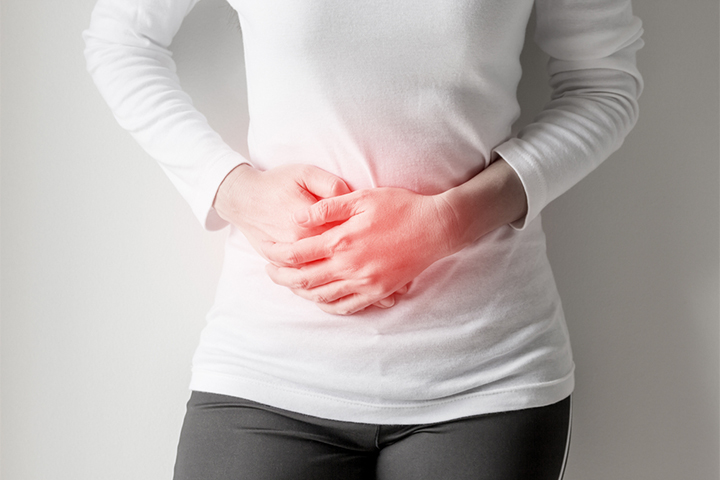
Image: Shutterstock
To-be-moms are often looking for more signs to know for sure if they have conceived the baby. There are many easy and sure methods of finding out if and when you are pregnant, but they often take more time than a mother’s enthusiasm can hold. There are many women around the world who swear by implantation cramps as a way of knowing that they have conceived a baby. While it is not the best and sure way to determine if you are pregnant, learning more about it can help you determine if you would want to consider it as a sure sign. Here in this article is everything you need to know about implantation cramp and how it really feels like. Read on to learn more about it.
What Does Implantation Feel Like?
Image: Shutterstock
Now, let’s paint a clearer picture of what implantation cramps feel like. It’s important to note that not all women experience these cramps, and their absence does not necessarily indicate a health problem. Furthermore, some women may confuse implantation cramps with regular menstrual cramps or other abdominal discomfort. However, for those who do experience them, the sensations can be quite unique and different from typical menstrual cramps.
Implantation cramps are often described as mild and subtle (2). They tend to be less intense than menstrual cramps and are characterized by a gentle, dull ache or a brief twinge in the lower abdomen. Imagine a sensation akin to a delicate tug or pinch, as if your body is signaling the beginning of an extraordinary journey. The intensity can vary from woman to woman, with some barely noticing the cramps while others may be more aware of them.
One noteworthy aspect of implantation cramps is their time-limited nature. Unlike menstrual cramps that can persist for several days, implantation cramps come and go relatively quickly. They may last for just a few minutes, a few hours, or a couple of days before subsiding. So, if you experience these fleeting episodes of cramping that disappear without a trace, it could potentially be a sign of implantation.
Where Can You Usually Feel The Cramps?
Image: Shutterstock
When it comes to the location of implantation cramps, they are typically felt in the lower abdomen, around the pelvic area (3). This region serves as the epicenter of activities during this remarkable stage of early pregnancy. However, it’s important to note that the exact location can vary from woman to woman. Some may experience cramps predominantly on one side of their abdomen, similar to the sensation felt during ovulation. Others may feel a more diffused discomfort throughout the lower abdomen. Every woman’s body is unique, and these variations are perfectly normal.
What Is The Nature Of These Cramps?
Image: Shutterstock
Another fascinating characteristic of implantation cramps is their occasional or intermittent nature. They don’t persist like regular menstrual cramps but instead, come and go in waves. You might experience a sudden episode of cramping, followed by a period of relief before the cramps return. This sporadic pattern sets them apart from the persistent and consistent nature of menstrual cramps. It’s almost as if the embryo is subtly making its presence known, reminding you of the incredible journey unfolding within your body.
What Other Things Can You Expect To Experience?
Image: Shutterstock
In some cases, implantation cramps may be accompanied by other early signs of pregnancy. Light spotting or bleeding, known as implantation bleeding, can occur around the same time as the cramps (4). This delicate spotting is usually much lighter and shorter in duration than regular menstrual period. Additionally, women may experience breast tenderness, fatigue, mood swings, or heightened sensitivity to smells (5). These symptoms can further reinforce the possibility of implantation and early pregnancy.
It’s important to keep in mind that the presence or absence of implantation cramps is not a definitive indicator of pregnancy. Every woman’s experience is unique, and some may not experience any cramping at all during implantation. Similarly, experiencing implantation cramps does not guarantee a pregnancy. Therefore, relying solely on cramping as a sign of pregnancy is not advised. It’s always best to consider the bigger picture and consult with a healthcare professional for proper evaluation and guidance.
If you suspect you may be pregnant or have concerns about your symptoms, it’s essential to seek the guidance of a healthcare professional. They can provide the necessary evaluation and support, taking into account your individual circumstances. Whether you’re actively trying to conceive or navigating the early stages of pregnancy, their expertise will ensure you receive the appropriate care and advice. May you have a happy pregnancy!
Implantation cramps can be described as mild, fleeting, and distinct from regular menstrual cramps. While not all women experience them, understanding their potential characteristics can offer valuable insights and alleviate unnecessary worries during the early stages of pregnancy. If you have concerns or suspect you may be pregnant, it’s always best to consult with a healthcare professional who can provide personalized care and guidance on your journey to parenthood.
















